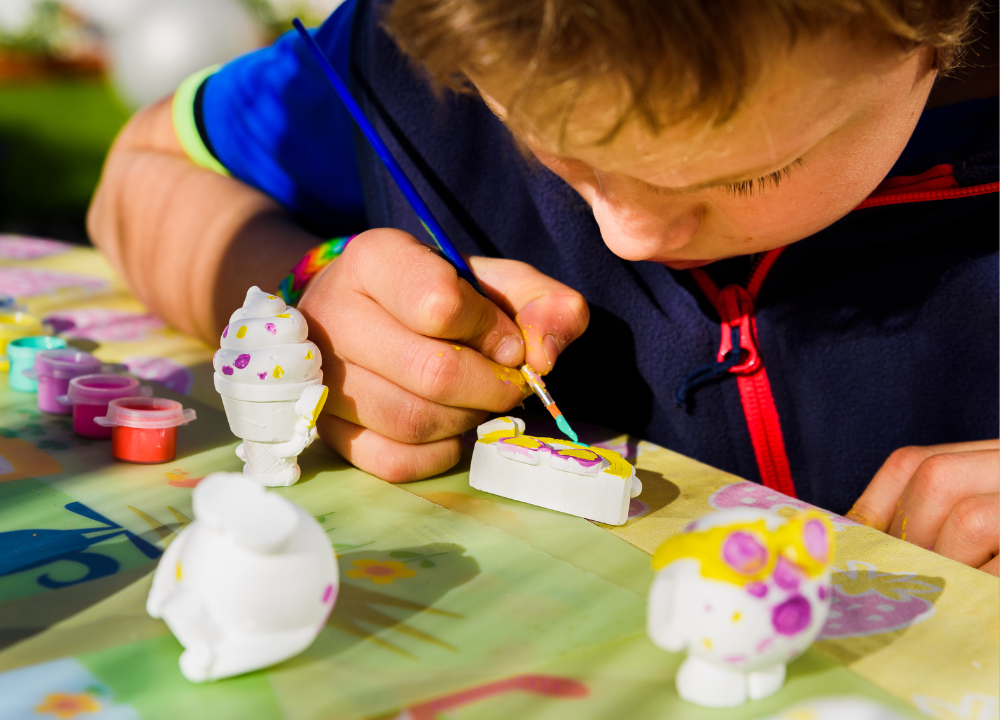The Bodies Exhibit showcases real human bodies preserved through plastination. It offers a detailed look into human anatomy.
The Bodies Exhibit is a fascinating display that provides an in-depth exploration of human anatomy. It uses real human bodies, preserved through a technique called plastination, to educate visitors. The exhibit aims to promote a better understanding of the human body’s complexity.
Visitors can see muscles, organs, and skeletal structures up close. This unique presentation helps demystify the inner workings of our bodies. The exhibit is both educational and engaging, making it a popular destination for students, medical professionals, and curious minds alike. It serves as a bridge between science and art, offering a rare glimpse into the human form.
The Fascination With Bodies Exhibit
The Bodies Exhibit is a unique and captivating display that showcases real human bodies. These exhibits draw millions of visitors each year. The fascination with Bodies Exhibit stems from the opportunity to see the inner workings of the human body up close. This educational experience offers insights into anatomy, health, and the complexity of human life.
History Of Bodies Exhibits
The history of Bodies Exhibits dates back to the late 20th century. The first major exhibit, “Body Worlds,” was created by Dr. Gunther von Hagens in 1995. Dr. von Hagens developed a technique called plastination. This technique preserves human bodies, allowing them to be displayed in lifelike poses.
- 1995: Launch of the first Body Worlds exhibit in Japan.
- 2005: The Bodies: The Exhibition opens in Tampa, Florida.
- 2010: Over 30 million visitors worldwide have attended Bodies Exhibits.
These exhibits have traveled globally, educating people about the human body. They have been displayed in major cities such as New York, London, and Sydney. The exhibits often feature different sections. These sections highlight various aspects of human anatomy, such as the skeletal, muscular, and nervous systems.
| Aspect | Description |
|---|---|
| Educational Value | Offers in-depth knowledge about human anatomy. |
| Artistic Display | Human bodies are posed artistically to show function. |
| Global Reach | Exhibits have been displayed in various countries worldwide. |
Ethical Controversies
The ethical controversies surrounding Bodies Exhibits are significant. One major concern is the source of the bodies. Critics question whether the bodies were donated ethically. Some exhibits have faced accusations of using bodies without proper consent.
- Consent: Were the individuals aware their bodies would be used in exhibits?
- Cultural Sensitivity: Do the displays respect the cultural and religious beliefs of the deceased?
- Commercialization: Is it ethical to profit from displaying human bodies?
These controversies have led to legal actions and public debates. Some countries have imposed stricter regulations on such exhibits. Organizers now focus on obtaining proper documentation and consent. They aim to ensure the ethical treatment of the bodies displayed.
Despite these controversies, many people still find these exhibits educational and enlightening. They offer a unique way to learn about human anatomy and health. By addressing ethical concerns, organizers hope to continue providing valuable educational experiences.
Educational Value
The Bodies Exhibit offers a unique educational experience. It provides a deep dive into human anatomy and medical advancements. Visitors can learn from real human specimens and detailed displays. The exhibit is more than just a visual treat; it’s a rich educational resource.
Anatomy Education
The Bodies Exhibit is a treasure trove for those interested in anatomy. It showcases real human bodies preserved through a process called plastination. This method keeps the bodies looking lifelike while preventing decay.
Here are some key educational elements:
- Detailed Displays: Each exhibit is labeled with detailed information. This helps visitors understand what they are seeing.
- Interactive Sections: Some parts of the exhibit allow visitors to interact with the displays. This makes learning more engaging.
- Guided Tours: Expert guides are available to explain complex concepts in simple terms. This is great for younger audiences.
These elements make learning about the human body both fun and informative. The exhibit covers all major systems in the body:
| System | Description |
|---|---|
| Skeletal System | Shows the bones and joints that form our body’s framework. |
| Muscular System | Highlights muscles and how they enable movement. |
| Circulatory System | Explains how blood flows through our bodies. |
| Nervous System | Focuses on the brain and nerves that control our actions. |
Medical Advancements
The Bodies Exhibit also sheds light on medical advancements. It shows how medical science has evolved over the years. This is particularly interesting for those in the medical field.
Here are some highlights:
- Historical Context: The exhibit includes sections on historical medical practices. It shows how far we’ve come in understanding the human body.
- Modern Techniques: Displays also cover modern medical techniques. This includes advances in surgery and diagnostics.
- Future Prospects: There are sections that discuss future medical technologies. This includes things like robotic surgery and gene therapy.
The exhibit serves as a bridge between the past, present, and future of medical science. It helps visitors appreciate the advancements that make modern medicine possible.
For medical students, the Bodies Exhibit offers a hands-on learning experience. It allows them to see real examples of what they study in textbooks. This makes complex medical concepts easier to understand.

Behind The Scenes
The Bodies Exhibit is a fascinating display of the human body in all its intricate detail. Visitors marvel at the preserved specimens and learn about the body’s structure and function. But what happens behind the scenes to prepare these exhibits? Let’s delve into the meticulous processes that make these displays possible.
Preservation Techniques
The preservation techniques used in the Bodies Exhibit are truly revolutionary. The main method used is called plastination, which preserves bodies for educational and research purposes. This technique was invented by Dr. Gunther von Hagens in the late 1970s.
Here’s a closer look at the steps involved:
- Fixation: The body is treated with formaldehyde to stop decay.
- Dehydration: All body fluids are replaced with acetone through a process called forced impregnation.
- Impregnation: The acetone is replaced with a liquid polymer like silicone rubber.
Impact On Society
The Bodies Exhibit offers a unique look into the human body. This exhibit has a deep impact on society. People from all walks of life visit to learn and reflect. The exhibit showcases real human bodies that have been preserved. It helps visitors understand their own bodies better. The impact on society is profound and multi-faceted.
Cultural Perspectives
The Bodies Exhibit influences cultural perspectives in various ways. Different cultures view the human body differently. This exhibit brings those differences to light. It helps people see the body as more than just a physical form. Here are some ways it impacts cultural views:
- Educational Value: In many cultures, the human body is a mystery. This exhibit educates people about anatomy and health.
- Respect for Life: Seeing real human bodies can evoke feelings of respect and awe. It helps people appreciate the complexity of life.
- Breaking Taboos: Some cultures have taboos about discussing the human body. The exhibit breaks down these barriers.
| Aspect | Influence |
|---|---|
| Educational | Teaches anatomy and health. |
| Emotional | Evokes respect and awe for life. |
| Social | Breaks down cultural taboos. |
Public Perception
The public perception of the Bodies Exhibit varies. Some people find it fascinating. Others might find it unsettling. Here are some common views:
- Fascination: Many people are fascinated by the exhibit. They find it educational and eye-opening.
- Unsettling: Some visitors feel uncomfortable. They might find it eerie to see real human bodies on display.
- Respectful: Others feel a deep sense of respect. They appreciate the opportunity to learn more about the human body.
| Perception | Percentage |
|---|---|
| Fascinated | 60% |
| Unsettled | 25% |
| Respectful | 15% |
The exhibit opens up conversations about science, ethics, and art. It brings people together to discuss important issues. It also helps people see their own bodies in a new light.
Global Reach
The Bodies Exhibit has fascinated millions around the world with its detailed exploration of the human body. Its global reach is evident through its widespread tours and international audience. This exhibit provides an in-depth look into the wonders of human anatomy, attracting people from diverse backgrounds and cultures.
Touring Exhibits
The Bodies Exhibit travels across the globe, bringing its educational displays to numerous cities. Each touring exhibit showcases real human bodies, preserved to reveal intricate details of the muscular, skeletal, and nervous systems.
- North America: Cities like New York, Los Angeles, and Toronto have hosted the exhibit.
- Europe: The exhibit has been to London, Paris, and Berlin.
- Asia: Major stops include Tokyo, Beijing, and Singapore.
These tours allow people of all ages to learn about the human body in an engaging way. Schools often organize field trips to the exhibit, making it an educational experience for students. Families visit to explore the fascinating displays together.
Below is a table highlighting some recent tour locations:
| City | Country | Year |
|---|---|---|
| New York | USA | 2022 |
| Paris | France | 2021 |
| Tokyo | Japan | 2020 |
These tours are meticulously planned to reach a wide audience, ensuring that everyone has the opportunity to experience the wonders of the human body.
International Audience
The international audience for the Bodies Exhibit is vast and diverse. People from different countries and cultures visit to gain a deeper understanding of human anatomy. The exhibit’s universal appeal lies in its ability to educate and fascinate visitors regardless of language or background.
The exhibit offers multi-lingual displays to cater to its diverse audience. Information panels are available in English, Spanish, French, and Mandarin, among others. This inclusivity ensures that visitors from various regions can fully appreciate the exhibit.
Here are some key points about the international audience:
- Families from different countries attend to learn together.
- Medical professionals use the exhibit for educational purposes.
- Tourists often include the exhibit in their travel itinerary.
The exhibit also collaborates with local institutions to enhance the visitor experience. In each city, partnerships with schools, universities, and museums ensure that the exhibit is integrated into the community.
The Bodies Exhibit continues to reach new audiences worldwide, spreading knowledge and wonder about the human body. Its ability to connect with people from different cultures makes it a truly global phenomenon.
Frequently Asked Questions
What Is The Bodies Exhibit About?
The Bodies Exhibit showcases real human bodies. It aims to educate visitors about human anatomy. The exhibit includes preserved bodies and organs.
How Are The Bodies Preserved?
The bodies are preserved using a process called plastination. This technique replaces water and fat with plastic. This preserves the specimens for educational purposes.
Is The Bodies Exhibit Suitable For Children?
Yes, it is generally suitable for children. However, parental discretion is advised. Some displays might be unsettling for younger children.
How Long Does It Take To Tour The Exhibit?
On average, it takes about 1-2 hours to tour. This depends on how deeply you engage with the displays.
Conclusion
The Bodies Exhibit offers a unique, educational experience for all ages. Visitors gain a deeper understanding of human anatomy. This immersive exhibit sparks curiosity and fosters appreciation for the complexity of our bodies. Don’t miss the chance to explore this fascinating display.
Your visit will be both memorable and enlightening.




